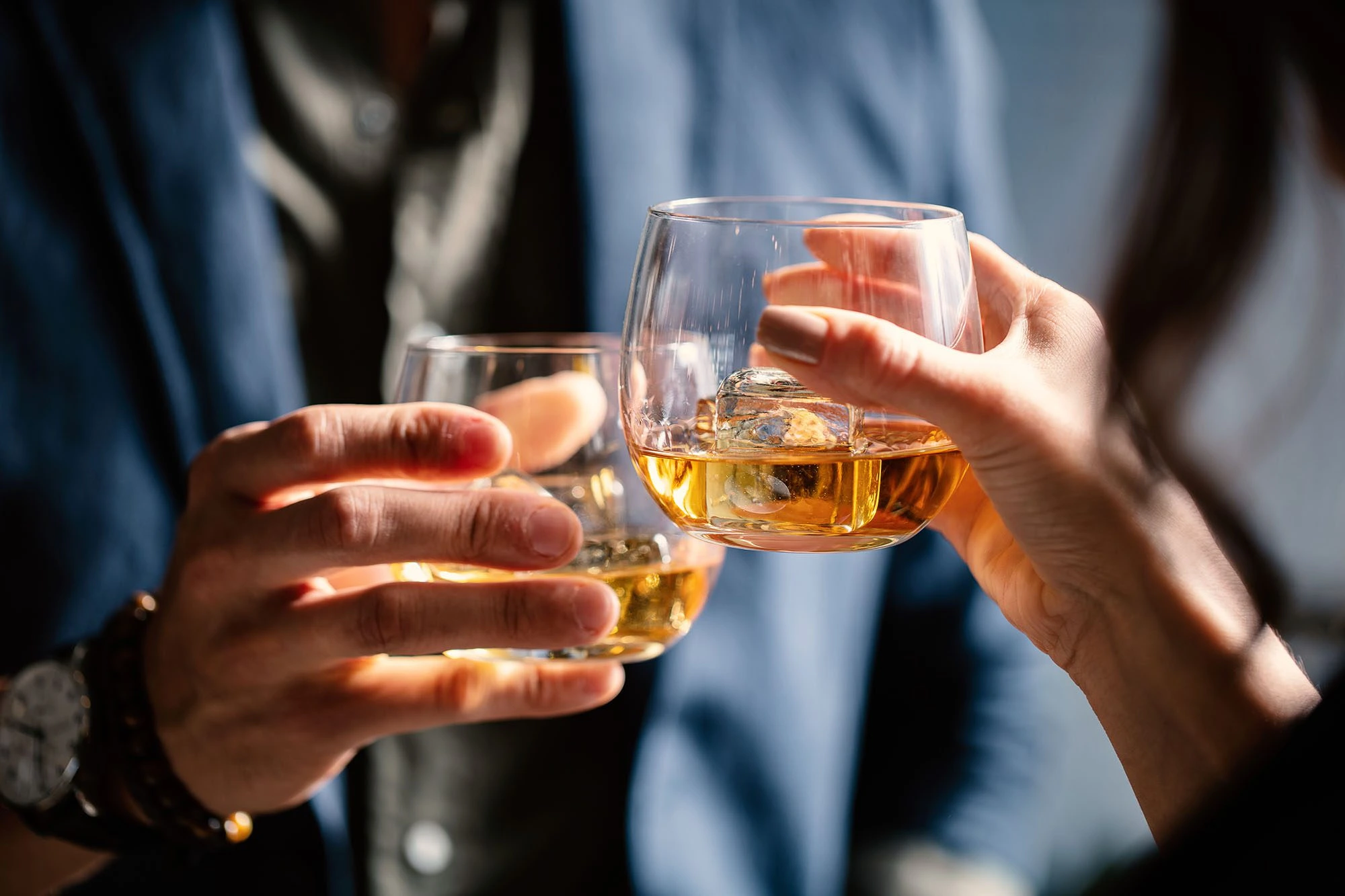Common Alcohol Street Names
Young people in the United States, particularly teens and college students, frequently utilize alternative names to describe various sorts of alcoholic beverages. These colloquial and informal words assist them in disguising their alcohol drinking habits, particularly from parents and authorities. Alcohol street names originate in specific cultural and social situations and are part of a more extensive vocabulary linked with drinking culture. Despite their apparent harmlessness, the widespread use of these expressions emphasizes the importance of alcohol in young people's social interactions.

Alcohol is often abused because of its propensity to change perceptions. This has serious health consequences, with over 178,000 deaths in the United States each year. It is disturbing to find such a high prevalence of alcohol consumption among young people, especially when, in 2022, 34.2% of 12 to 20-year-olds reported to have consumed alcohol at least once in their lives.
Understanding the many names for alcohol might help parents spot potential indicators of alcohol use in their children. This knowledge allows them to initiate timely conversations and take the required actions to prevent possible misuse and its associated consequences.
Is There a Slang Name for Alcohol?
One of the most popular slang terms for alcohol is "booze." This term commonly refers to any alcoholic beverage, including beer, wine, and spirits, such as whiskey and vodka. "Booze is a versatile and casual phrase that has been used for decades, if not longer, in several English-speaking nations. It is typically used informally in social situations or when discussing alcohol in general.
What are Some Common Alcohol Street Names?
Alcohol street names are usually based on a story or characteristic of the specific type referred to. Here are some examples:
Illicit Production Names
Most of these names originated during Prohibition:
1. Moonshine: This name comes from the practice of distilling illegal liquor under the moon's light to avoid detection.
2. White Lightning: It refers to the clear, potent nature of illegally distilled moonshine.
3. Bathtub Gin: This is referred to as the Gin made at home during Prohibition, often in bathtubs to conceal the distillation process.
4. Canned Heat: This is a very low-quality alcohol that was often sold in cans, especially during economically tough times.
5. Cathead: This refers to moonshine that was stored in jars shaped like cats' heads to avoid suspicion during Prohibition.
Quality Names
6. Rotgut: Cheap, harsh-tasting alcohol, often associated with its adverse effects on the stomach.
7. Liquid Gold: Describes high-quality or premium alcohol due to its perceived value and enjoyment.
8. Hard Stuff: Refers to strong, high-proof alcoholic beverages like whiskey or vodka.
9. Devil's Brew: A playful term implying strong or potent alcoholic drinks with potentially intoxicating effects.
10. Amber Fluid: Australian slang for beer, referencing its color and fluidity.
Funny Names
11. Booze: A colloquial term for any alcoholic drink commonly used in casual settings.
12. Sauce: Refers to alcohol as a flavorful additive akin to sauces used in cooking.
13. Giggle Juice: Alcohol that tends to induce laughter or a light-hearted mood when consumed.
14. Nectar of the Gods: Humorous term describes exceptionally enjoyable or high-quality alcoholic beverages.
15. Zonk Juice: Street slang for strong or potent alcoholic beverages, suggesting their ability to cause intoxication.
Historical Names
16. Firewater: Originally used by Native Americans to describe potent European spirits introduced to them.
17. John Barleycorn: Personification of alcohol in English folklore, representing its effects on drinkers.
18. Grog: Historically, diluted rum was issued to British Navy sailors to prevent scurvy and promote morale.
19. Brown Jug: Refers to a container traditionally used for holding beer or spirits.
20. Mountain Dew: Historical term for illegally distilled whiskey, often produced in remote mountain areas.
Names Based on Appearance
21. Red Eye: Beer mixed with tomato juice or other additives, giving it a reddish hue.
22. Brown Cow: Colloquial for dark-colored beer or rum, sometimes with added milk or cream.
23. Amber Fluid: Australian slang for beer, highlighting its amber color and liquid form.
Regional Names
24. Hooch: Originally referred to illegally distilled liquor, particularly during Prohibition.
25. Bock: Strong German beer traditionally brewed for special occasions like festivals or holidays.
26. Wobbly Pops: Canadian slang for beer, implying its ability to cause a slight wobble or imbalance.
27. Batjuice: A playful term for homemade or strong alcoholic drinks, possibly referencing their origin.
28. Dynamite: Slang for potent or strong alcoholic beverages, suggesting their powerful effects.
Names Based on “Function”
29. Liquid Courage: Alcohol that temporarily boosts confidence, particularly in social situations.
30. Chaser: A drink consumed immediately after a shot of hard liquor to mitigate its strong taste.
31. Highball: A mixed drink of whiskey and a non-alcoholic mixer, typically served over ice.
32. Toddie: Warm whiskey drink traditionally made with hot water, honey, and spices.
33. Tonic: Originally referred to as tonic water used in mixed drinks like gin and tonic, it is now used more broadly.
Miscellaneous Names
34. Brew: General term for beer or any fermented alcoholic beverage.
35. Suds: Informal term for beer refers to the foamy bubbles formed on a freshly poured glass.
36. Swill: Low-quality beer or liquor, often implying it's unfit for consumption.
37. Bubbly: Informal term for champagne or sparkling wine, referencing its effervescence.
38. Bitters: Aromatic spirits flavored with botanicals, traditionally used as a digestive aid.
Uncommon Names
39. Schnapps: Strong, often fruit-flavored spirits popular in Central and Eastern Europe.
40. Absinthe: Highly alcoholic herbal spirit, historically associated with artistic and bohemian communities.
41. Poteen: Illegally distilled Irish whiskey, traditionally made in remote rural areas.
42. Akvavit: Scandinavian spirit flavored with herbs like caraway or dill, often consumed during festive occasions.
43. Ouzo: Anise-flavored Greek spirit, typically enjoyed diluted with water and ice.
Urban Slang
44. Jungle Juice: Mixed alcoholic drink often served at parties or gatherings, known for its diverse ingredients.
45. Everclear: Brand of high-proof grain alcohol known for its strong potency.
46. Piss: Derogatory slang for beer, implying disdain for its taste or quality.
47. Shine: Informal term for moonshine or illegally distilled alcohol, often associated with rural production.
48. White Satin: Smooth, high-proof liquor known for its refined taste and appearance.
Names Based on Production
49. Mash: Mixture of fermented grains used as a base for distillation in producing spirits like whiskey.
50. Still: Equipment used in distillation to separate alcohol from fermented mash.
51. Bottles: Containers used for storing and selling alcoholic beverages.
52. Corks: Stoppers made from cork or synthetic materials used to seal bottles of alcohol.
53. Distillate: Pure alcohol produced by distillation, separated from fermented liquid.
Organic References
54. Spirit: Derived from Latin "spiritus," meaning breath or essence, referring to distilled alcoholic beverages.
55. Grain: Refers to the primary ingredient in many alcoholic beverages, such as barley, wheat, or corn.
56. Vine: Grapevine is the source of grapes used in winemaking.
57. Cask: Wooden barrel used for aging spirits like whiskey or brandy, influencing their flavor.
58. Cork: Stopper material traditionally used in wine bottles to seal them.
Geographical References
59. Bourbon: American whiskey originating from Bourbon County, Kentucky, is known for its distinctive flavor profile.
60. Scotch: Whiskey made in Scotland, typically aged for several years in oak barrels, known for its regional variations and strict production standards.
How to Address Alcohol Consumption in Young People?
Addressing alcohol consumption among young people needs a multifaceted approach that includes education, communication, support, and community participation. Schools should create comprehensive education programs that convey factual information about the dangers of alcohol usage using engaging techniques such as peer-led debates and workshops. Parental involvement is crucial; teaching parents the signs of alcohol use and suitable communication techniques helps them create well-defined expectations and boundaries.
Open and honest communication between parents and their children fosters trust and helps facilitate talks regarding alcohol-related problems. One can help young people by matching them with mentors and positive role models who practice good behavior. Healthy substitutes for alcohol intake are community-based initiatives offering creative events, including sports and the arts. Advocacy for the application of the laws forbidding underage alcohol usage is vital.
Regular screenings by medical professionals and school counselors can aid in identifying and treating early alcohol consumption. Individuals battling alcoholism rely heavily on having access to both individual and group therapy. Advocating for media literacy and providing youth with the necessary resources to become peer educators will empower them to resist the persuasive strategies used in alcohol advertising. By behaving this way, you may establish a respectable environment that deters underage drinking and inspires youth to make moral judgments.





